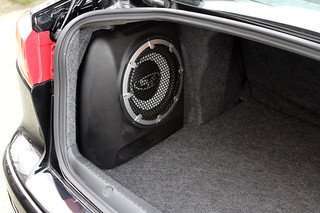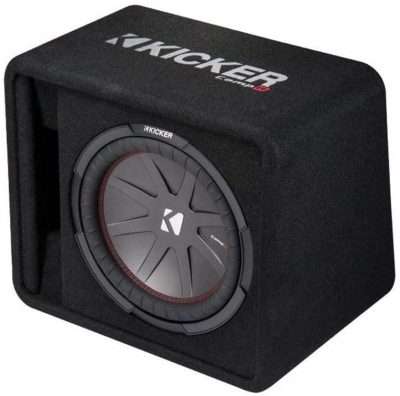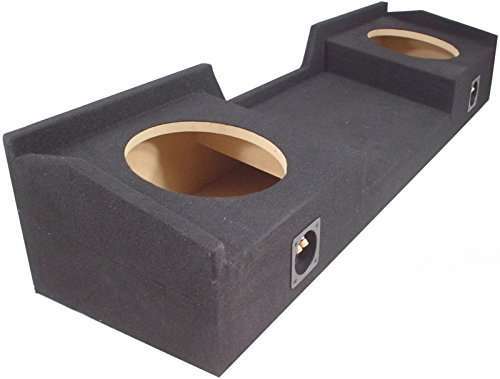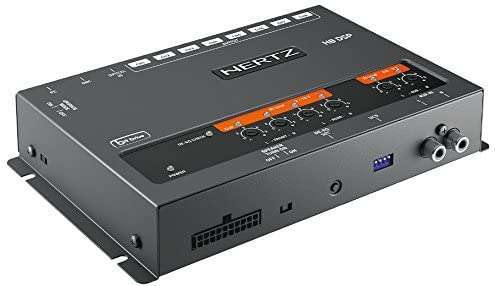After Installing different subwoofer and amplifier builds I’ve come to the conclusion that we should let you know about our favorite subwoofers for sound quality. These are our favorites to install, tune and sell! All 5 of us picked one that we absolutely love.
What Are the Different Types Of Subwoofer Enclosures?
There a 4 main types of subwoofer boxes(enclosures) on the market today. All 4 of them manipulate air pressure in a different way. Sealed, Ported, Bandpass & Infinite Baffle. Out of these 4 types of enclosure types, 2 of them are the most popular. Sealed and Ported.

Amazon affiliate here: If you click any Amazon links on my pages and purchase any products I get a small commission from within the original price. Thank you!
Sealed Enclosures
They provide an acoustically controlled environment, which results in a more accurate and controlled sound. Sealed enclosures also improve the clarity of sound by minimizing noise pollution. Additionally, they protect the equipment from dust, dirt, and other contaminants that can cause damage.


Ported Enclosures
They allow for greater efficiency in the movement of air, which can lead to a louder overall sound. Also, they can help to improve the bass response in a system, as well as better distribute sound throughout a room.
Additionally, ported enclosures can be more compact than sealed enclosures, making them a good option for smaller systems.


Bandpass Enclosures
Bandpass enclosures have a number of advantages compared to other types of speaker enclosures. First, they provide a more focused sound than other types of enclosures, which is ideal for use in PA systems or for home theater applications.
Second, bandpass enclosures are more efficient than other enclosures, meaning that they can produce more sound using less power. This makes them a good choice for use in applications where space or power is limited.
Find Your Audio System's Ideal Wire Gauge


Infinite Baffle
There are several pros of using Infinite Baffle enclosures in a sound system. First, the baffle helps to prevent sound waves from reflecting off of the walls of the enclosure and back into the speaker, which can cause distortion.
Second, the baffle creates a “tunnel” for the sound waves to travel through, which helps to improve their clarity and quality. Third, the infinite baffle enclosure is typically more compact and easier to install than other types of enclosures.
Why Are These The Best Subwoofer Enclosures
These 4 Types of subwoofers are the only official types of subwoofers on the market. They provide different levels of bass, different ranges of bass, and different levels of sound quality. The type of quality you need will determine the type pf subwoofer enclosure.
A List Of 4 Subwoofers We Love To Install
A small list of Subwoofers we love to install. These subwoofers don’t tend to cause any issues once they leave the shop in the trunk of one of our customer’s vehicles and that’s all that we ask of subwoofers. Sound good, last long, and don’t break.
SUNDOWN AUDIO SA-12 V.2 D2 – 12 Inch Dual 2 Ohm
The Sundown SA-12 V.2 D2 is a 12 inch Dual 2 ohm speaker that produces 1000 watts RMS. The SA-12 V2 is a go-to for entry level performance sound. This subwoofer isn’t for everyday listening. This subwoofer is all about pissing the people off next to you at a red light.
This subwoofer is built extremely well and does not leave much to be desired in the way of Decibels or longevity. The only downside to this subwoofer is that the amplifier need to power it wont be cheap.
Focal 30A4 Access Series – 12 Inch 4-ohm subwoofer
The Focal 30A4 is a 12 inch subwoofer with a 4 ohm impedance with an RMS rating of 50 – 250 watts. Keep in mind the peak power handling of this subwoofer is 500 watts.
This Subwoofer is one of my favorite drivers for quality, When installed I never have to worry about an owner not liking the quality. The Only con to this is that the RMS power handling can make it hard to sell often, but audiophiles LOVE this subwoofer.
Focal SUBP20F – 8 Inch Subwoofer
The Focal SUBP20F is our absolute favorite 8 inch subwoofer. Comes with dual 4 ohm voice coils and an RMS rating of 250 watts. We often build stealth enclosures for this subwoofer to fit in the side of trunks or we build custom brackets to mount it in factory locations when we are replacing a factory premium system.
With Focal the most important things are build quality and premium sound output, this subwoofer reproduces some of the best output I have seen out of an 8 inch driver.
Rockford Fosgate P3D2 – 15 Inch Subwoofer


The Fosgate P3d2 has an RMS of 600 watts and a dual 2 OHM voice coil set up. This subwoofer is our top 15 inch driver, it fly’s off of the shelves at most audio shops and the price is amazing. It is also worth mentioning that its rating of 600 watts RMS doesn’t seem to fully power these subs.
These things are LOUD and we LOVE IT! Please do not let the RMS rating fool you, on a 15 inch cone you get more air movement at lower power levels. So don’t be surprised if it hits a lot harder than a dual 2 ohm 12 or 10 with its same RMS.
What affects sound quality in subwoofer enclosures?
Subwoofer enclosures have a significant impact on sound quality and can make a huge difference when it comes to bass response. The type of enclosure, the material used, and the design of the subwoofer can all affect the quality of sound.
Make sure to research your options before making a purchase so you can get the best possible sound and performance from your subwoofer.
When it comes to the quality of sound produced by a subwoofer enclosure, there are several factors that come into play. The first is the type of enclosure.
- Sealed enclosures are typically considered to produce the cleanest, most accurate sound, while ported and bandpass enclosures can add additional distortion and noise.
- The size and shape of the enclosure also affect sound quality, with larger and squarer boxes generally producing better results than smaller, more rounded boxes.
- Finally, the air pressure within the enclosure can have a significant impact on sound quality, with higher pressure resulting in louder, more distorted sound.
Should I Use a Sealed Enclosure or a ported subwoofer enclosure?
There are pros and cons to both sealed and ported enclosures when it comes to bass performance. A sealed enclosure is designed to keep the air from escaping, which results in a tighter sound.
However, this type of enclosure can be less efficient, which means it may require more power to produce the same level of bass as a ported enclosure. On the other hand, a ported enclosure allows more air to escape and result in a more open sound.
Depending on the placement and size of the port (where the air escapes when the woofer cone is moving) you can even have more bass at certain frequencies.
My go-to question when talking to customers about subwoofer enclosures is “What type of music do you like?”. Different types of music tend to have different levels of bass produced by instruments either real or layered into a keyboard.
If you listen to rock or country you might like a 10 inch sealed enclosure. A sealed enclosure will allow those like instruments to kick clearly and with the quick punch and release that you need to better experience your audio.
Is a bigger subwoofer enclosure better?
In short Maybe. It depends on how much bass you like and how much space you have to install. Bigger sub boxes push more air so you get more bass decibels. A smaller box will produce a snappy more controlled and lower-volume bass.
There is a lot of debate when it comes to the size of a subwoofer enclosure. Some people believe that a bigger enclosure is always better, while others think that it’s not necessary to have such a large enclosure. The truth is that there are pros and cons to both sides of the argument.
When it comes to having a bigger enclosure, there are some definite benefits. First of all, you will be able to get louder bass with less distortion. Secondly, you will be able to achieve more accurate bass tones. Finally, you will be able to use a lower-powered amplifier, which can save you money.
However, there are also some disadvantages to using a bigger subwoofer enclosure. First of all, it can be more expensive to build or even buy a larger enclosure. So, as a rule of thumb if you are looking for tight and calculated bass notes I would recommend s smaller box (sealed).
What is the best material to make a subwoofer box ?
The best material to make a subwoofer box typically depends on the size of the box and the desired sound quality. Some common materials used to make subwoofer boxes include fiberglass, MDF, and plastic.
Each material has its own benefits and drawbacks, so it is important to choose the right one for your needs. Fiberglass is strong and relatively lightweight, making it a good choice for large subwoofer boxes.
Benefits of Using MDF For a Subwoofer Enclosure
MDF is a great material for subwoofer enclosures because it is dense and rigid, which helps to prevent the enclosure from resonating and distorting the sound. MDF is also relatively inexpensive and easy to work with, which makes it a popular choice for DIY builders.
Benefits of Using Fiber Glass Subwoofer Enclosures
These enclosures are designed specifically for bass speakers (subwoofers), and they can help to improve the performance and sound quality of your system. In addition, fiberglass enclosures are often more durable than other types of enclosures, which means they can withstand more wear and tear.







